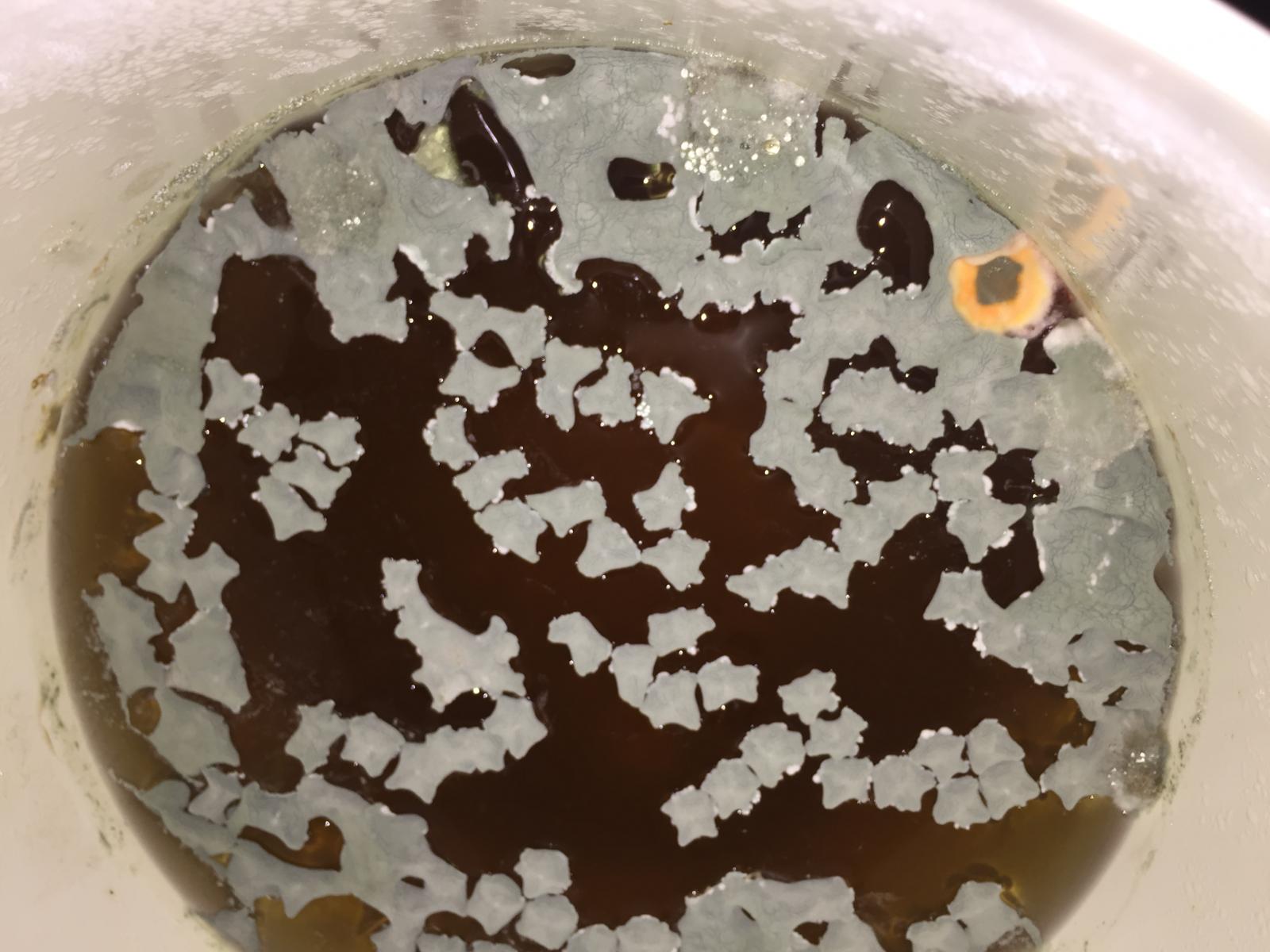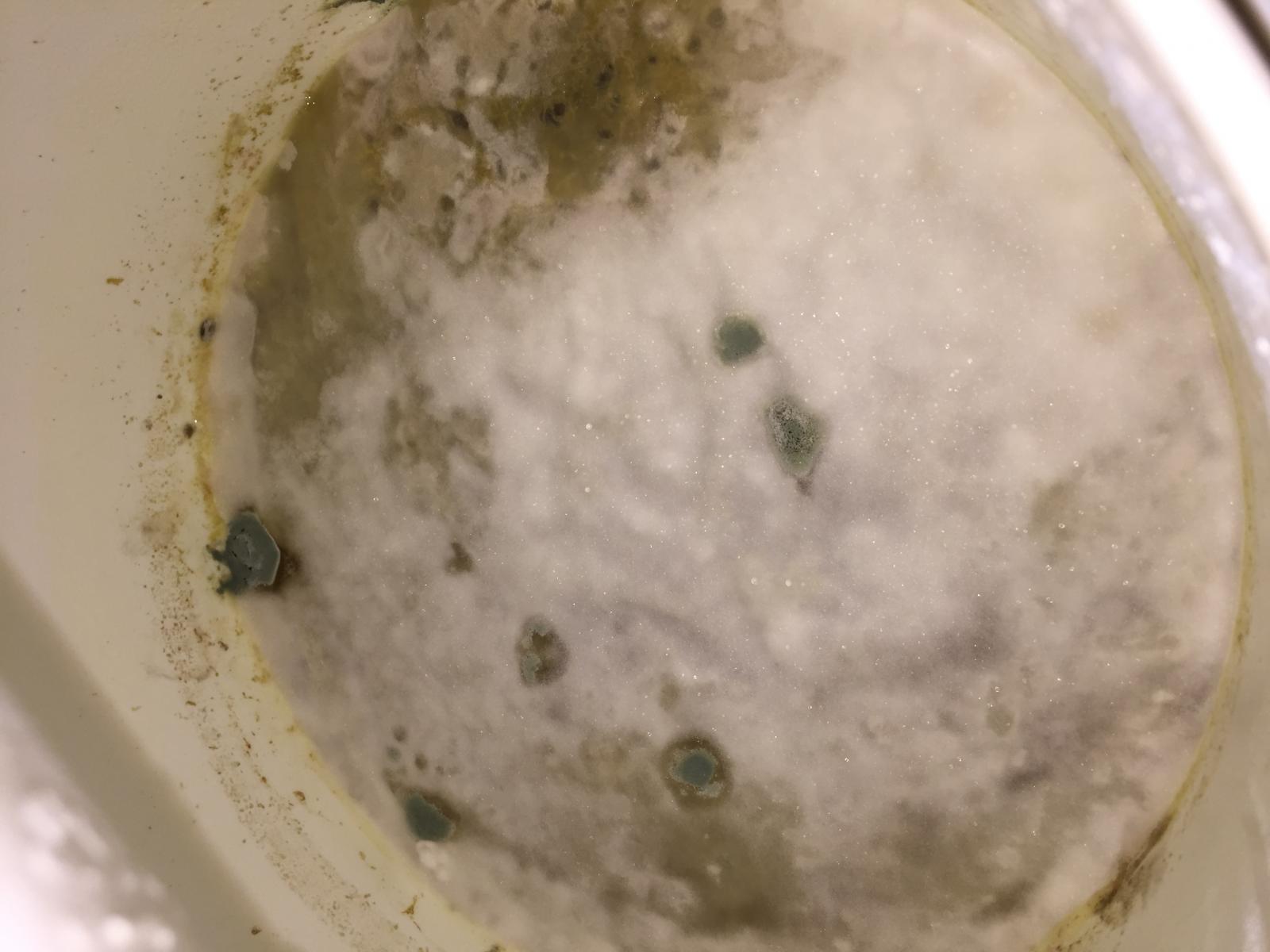So I finally decided to go for a spontaneous fermentation.
A little background, I live on a farm so I just made some 1.020 wort hopped to about 10 IBU and a Ph of 4.3, split it in three batches and put them:
1) in the orchar, 2) on the silo 3) in the hay field.
How they turned out after 3 weeks (3 weeks is today 31 May 17):
1) the orchard smells great. Very brettanomyces, barnyard funk, spicy belgiany smell to it. Also has a very standard, white mold looking pellicle. Very optimistic about this one.
2) The silo batch has grown some black spotted mold. Smells fine to be honest but i'm probably going to toss it ( I don't have a picture for it but if anyone wants to see and give an opinion I can go take one).
3) the hay field has grown some interesting green patterned mold. Not really ever seen it in any other pellicle pictures so i'm just wondering what people think. whether its worth keeping and growing up anymore than it currently is. It smells relatively good to be honest. Very fruity smelling despite the odd look.
I've attached images of orchard and silo for you guys. I'm just wondering what your thoughts are on this odd green spotted pellicle and if you think a) its fine and b) whether its worth keeping, maybe even a little c) have you seen this before?
[img="https://imageshack.com/i/pmGzX2cVj"]
[img="https://imageshack.com/i/pminvcIgj"]


A little background, I live on a farm so I just made some 1.020 wort hopped to about 10 IBU and a Ph of 4.3, split it in three batches and put them:
1) in the orchar, 2) on the silo 3) in the hay field.
How they turned out after 3 weeks (3 weeks is today 31 May 17):
1) the orchard smells great. Very brettanomyces, barnyard funk, spicy belgiany smell to it. Also has a very standard, white mold looking pellicle. Very optimistic about this one.
2) The silo batch has grown some black spotted mold. Smells fine to be honest but i'm probably going to toss it ( I don't have a picture for it but if anyone wants to see and give an opinion I can go take one).
3) the hay field has grown some interesting green patterned mold. Not really ever seen it in any other pellicle pictures so i'm just wondering what people think. whether its worth keeping and growing up anymore than it currently is. It smells relatively good to be honest. Very fruity smelling despite the odd look.
I've attached images of orchard and silo for you guys. I'm just wondering what your thoughts are on this odd green spotted pellicle and if you think a) its fine and b) whether its worth keeping, maybe even a little c) have you seen this before?
[img="https://imageshack.com/i/pmGzX2cVj"]
[img="https://imageshack.com/i/pminvcIgj"]
































![Craft A Brew - Safale BE-256 Yeast - Fermentis - Belgian Ale Dry Yeast - For Belgian & Strong Ales - Ingredients for Home Brewing - Beer Making Supplies - [3 Pack]](https://m.media-amazon.com/images/I/51bcKEwQmWL._SL500_.jpg)


























